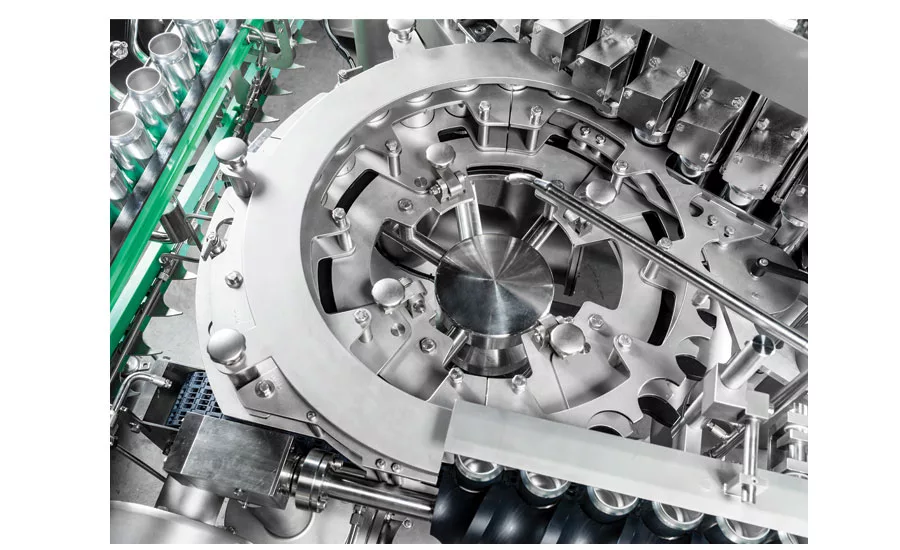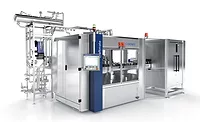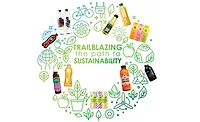Performance, safety key to success of canning equipment
Quality control impacts diverse products on filling line

In Miriam Webster’s dictionary, the phrase “can it” means to shut up or be quiet. But in the packaging equipment vernacular, equipment suppliers are finding no need to keep quiet about the increasing flexibility, product diversification and minimal changeovers of today’s can filling and seaming lines.
“It’s a lot to take stock of, as drink manufacturers need greater performance to match the overall rising demand for their products, while at the same time guaranteeing absolute product safety, minimizing total cost of ownership while preparing for future production needs,” says Stefano Baini, filling product manager for Sidel.
In North America specifically, the Octeville-Sur-Mer, France-based company is seeing a growing focus on “better-for-you” options with an increased interest in organic and natural products, which goes hand-in-hand with reduced sugar, calories and artificial ingredients intake, Baini says.
“The search for a broader number of SKUs and numerous container sizes on the market call for higher flexibility, requiring minimal changeover times, [with the] possibility to handle both still and carbonated, as well as hot-, ambient- and cold-filled beverages. All of that while lowering energy, water, chemicals and raw material consumption,” Baini says. “Additionally, we are witnessing a blurring of beverage categories with a heightened interest in hybrid/fusion drinks, such as fruit juice mixed with tea, as well as with sparkling water.
“Innovations in terms of carbonation, flavor and functional enhancements, as well as packaging, are being introduced to compete with other soft drinks categories,” Baini continues. “Alongside this, we see some ‘mouthfeel’ innovations, using nitro cans, and adding viscosity through purees and jellies and the like.”
Canning it
Experts note that more beverages are being packaged in cans, including wines, waters, non-alcohol and hard seltzers, craft beers and cannabidiol (CBD) beverages. Along with standard 12-ounce cans, suppliers have to keep pace with the request for more aluminum can options such as 7.5-ounce mini-cans, 12-ounce slim cans, which are increasing in popularity because they are seen as “premium” packages, and large-format 19.2-ounce cans.
Yet, the diversity of cans and the products contained therein hasn’t impacted canning operations at Krones Inc., according to Barry Fenske, product manager of the technical sales filling division at the Franklin, Wis.-based company.
“Our canners are capable of handling a variety of cans on the market with just some additional change parts. This makes our canners attractive to co-packers as well,” Fenske says. “Our canners can do hot fill, cold fill, carbonated, non-carbonated, clear, some particulate, etc. Our top request is still [from] the beer guys — craft and the larger companies.
“But the rate of requests is even with last year, maybe a bit lower,” he continues. “Where we see the most increase is in the cannabis industry and hard seltzer industry. Those requests have doubled in the last few years.”
Fenske highlights the “notable increase” in testing procedures prior to mass production. “What we’re seeing more of is product testing in our lab to determine filling characteristics so we can accurately size a canner for these new, diverse products coming out,” he explains.
Howard Goldberg, president of the U.S. division of Ferrum Packaging Inc., Havre de Grace, Md., notes that it’s been an “exciting year” for seaming as filling carbonated and non-carbonated products in cans has grown immensely to “become the norm,” he says. Ferrum has maintained a proactive approach to the beverage industry market since its founding in 1917, he notes.
“Ferrum utilizes a quick-change methodology, and as a leader in the global industry, we are always striving to lower changeover times for all sizes in the market to help our customers have increased efficiency, production and uptime,” Goldberg says.
Down to a science
Yet, speed and fast changeovers are only the tip of the iceberg. Today’s can fillers and seamers must be versatile and provide maximum, safe product quality because a company’s long-term business growth relies on one important factor: quality control.
Quality control is crucial to beverage operations, notes Jason Chester, director of global channel programs at InfinityQS International Inc., Fairfax, Va. He suggests that beverage-makers can find success by adopting four quality control aspects during can filling and seaming. The following are those four aspects:
- Net content control: This ensures that packages are not underfilled or overfilled in order to increase consumer confidence while not giving product away, thus hindering profitability.
- Waste: This comes into play if a manufacturer wastes product by scrapping batches or lots that are in breach of net content limits.
- Integrity: This concerns two aspects, the actual product in the package and the integrity of the package itself. The can needs to perform well, not lose carbonation or leak.
- Labeling: In addition to having accurate labels, labels should be correctly aligned and affixed. Expiration, or “best before” dates, should be correct along with verified QR codes to ensure traceability.
Krones’ Fenske adds: “Filling volume accuracy, low-oxygen pick-up for oxygen-sensitive products and a proper seam [are] important to address during filling/seaming. It’s all about better yields for the customer, as well as long shelf-life for their products.”
As the quality control of beverages and sustainability become intertwined, equipment suppliers are releasing more compact, faster, flexible and more hygienic equipment to keep pace. As a prime example, Sidel’s Baini points to its EvoFILL Can, which has the ability to fill CSDs at ambient temperature and still drinks in hot-fill, thus accommodating a wide range of beverages with a single piece of equipment.
The EvoFill Can contains 54 to 182 filling valves on the machine’s carousel and operates at speeds of as many as 130,000 cans an hour with can height sizes from 150-ml to 1-liter.
Rapid changeovers, combining functions on one machine and offering easier cleaning also are improving can filling and seaming operations, Baini adds.
“The new valve centering bell design eliminates the need for changeovers of all possible can-end types in the beverage industry — from 200 to 209 — for maximized uptime,” Baini explains. “Plus, the varying height of the can is no longer a challenge, as the carousel adjustment is fully automatic.
“It also features a ‘no base’ design, which is very accessible, [to] ensure overall easier cleaning and no residual of product in the filling environment,” he continues. “… The external tank acts as an enabler for the Sidel BlendFILL configuration, which combines the mixer and filling buffer tank in one single skid.”
Fenske notes that Krones offers support and machines that can equip 99 percent of an entire canning line. He points to its Craftmate Can Filler, which is ideal for a low output range. It features a small footprint, compact design and cans small production quantities of 12-ounce cans at a rate of 80 to 120 cans a minute.
“The Craftmate Can Filler has a volumetric, servo-driven filler and processes cans of various sizes and format along with diverse beverage types,” he says. “… We have some new technology in development that is scheduled for release in early 2020. In addition, … we are seeing some of the key figures in the water industry asking about canners.” BI
Looking for a reprint of this article?
From high-res PDFs to custom plaques, order your copy today!





